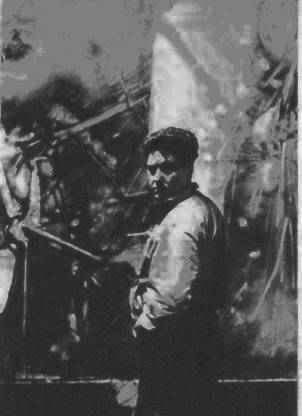
Roberto Matta
Roberto Matta was a Chilean artist and architect known for his significant contributions to the Surrealist movement. His works are distinguished by ethereal landscapes and distorted human figures, which reflect his deep interest in the subconscious mind.
Biography of Roberto Matta
Roberto Matta was born in Santiago, Chile. He studied architecture at the Pontifical Catholic University of Chile before moving to Paris, where he worked under the architect Le Corbusier. During his time in Paris, Matta met André Breton, the leader of the Surrealist movement, and began experimenting with automatic drawing. This technique, used by Surrealist artists, aimed to access the subconscious mind and played a key role in shaping Matta's future works. In 1938, Matta transitioned from drawing to oil painting, marking a pivotal moment in his artistic career. He moved to the United States, where his unique style flourished until 1948. Matta passed away on November 23, 2002, in Civitavecchia, Italy.
Roberto Matta's Famous Paintings
Matta's paintings became famous for their dreamlike, hallucinatory qualities and the incorporation of biomorphic forms. His early works often depicted ethereal landscapes and distorted human figures. In the 1960s, Matta introduced clay into his paintings, bringing a tactile quality to his work and allowing for new explorations in form and texture. This innovative approach further solidified his reputation as a significant figure in modern art.
Roberto Matta's Art Style
Roberto Matta's artistic style is rooted in the Surrealist tradition, characterized by its exploration of the subconscious mind through automatic drawing and painting. His early works are known for their biomorphic forms and dreamlike landscapes, often inspired by his interest in science and cosmology. Matta's paintings from the 1940s and 1950s reflect the anxieties of the time, featuring complex imagery of electrical machinery and anguished figures. His introduction of clay into his paintings in the 1960s added a new dimension to his work, allowing for greater expressiveness in texture and form.
Retrospective Exhibitions
Roberto Matta's contributions to the art world were recognized in a retrospective exhibition at The Museum of Modern Art in New York in 1957. This exhibition traveled to the Walker Art Center in Minneapolis and the Institute of Contemporary Art in Boston, showcasing his work to a broader audience and affirming his place in the history of modern art.
Years:
Born in 1911
Country:
Chile, Santiago
Gallery: